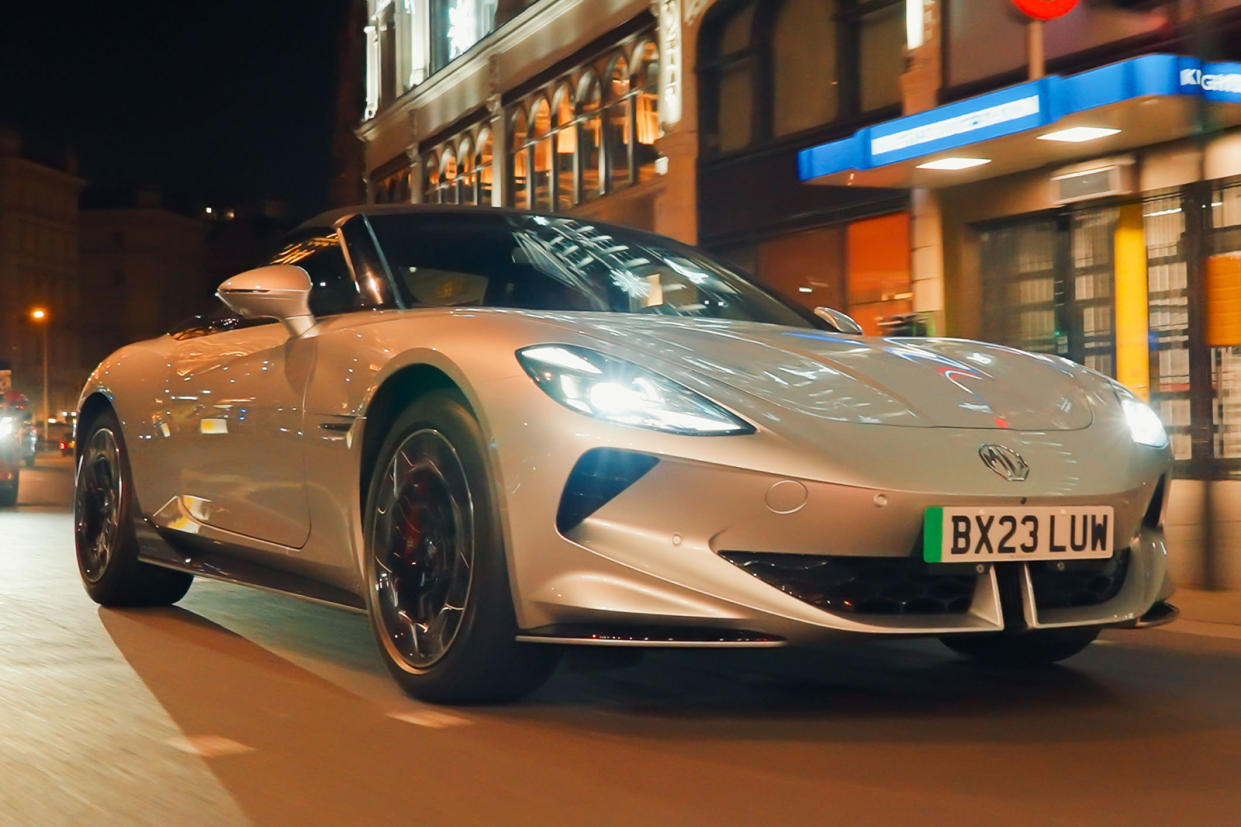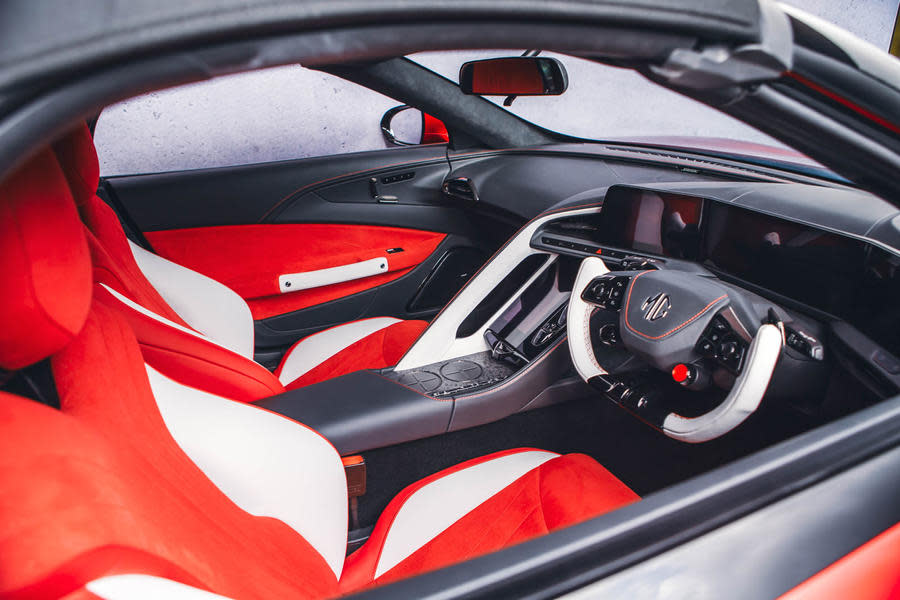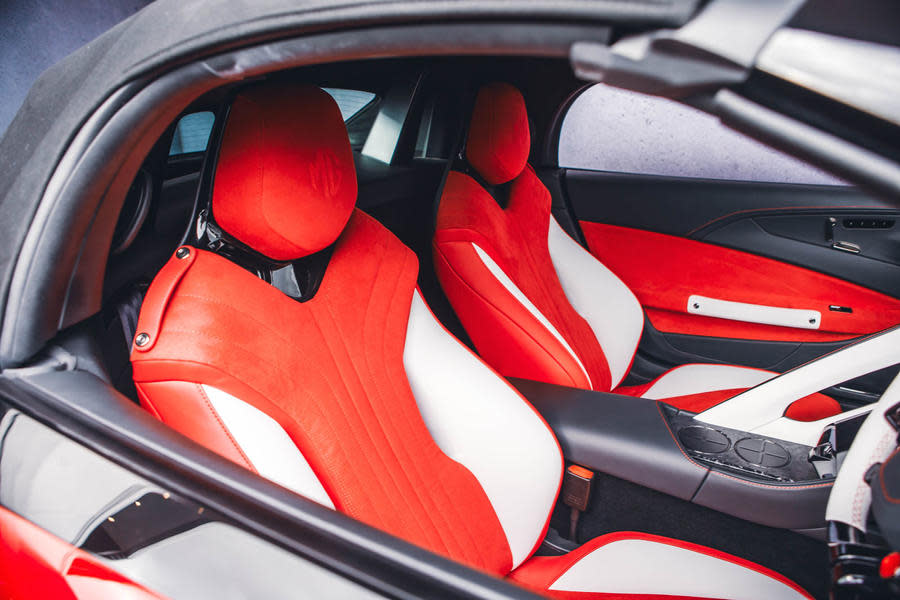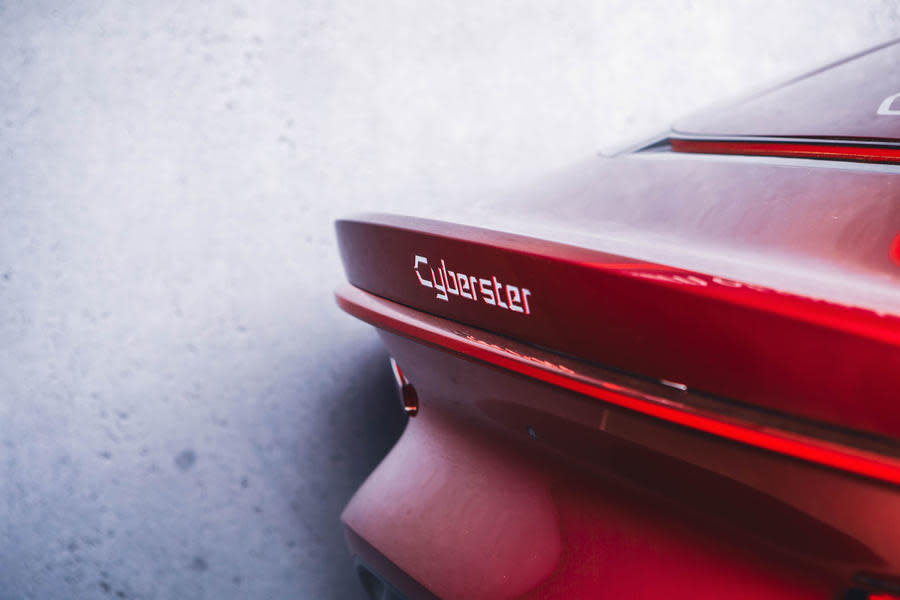MG Cyberster electric roadster on sale now from £54,995

MG claims the Cyberster is designed for the "new generation of sports car drivers"
The MG Cyberster has been priced from £54,995 in the UK and is available to order now, with deliveries for the long-awaited electric sports car due to start in August this year.
MG has confirmed the drop-top EV will be sold with two specification levels: Trophy and GT. All Cybersters are equipped with a 77kWh battery, with power and range varying depending on the specification.
The Trophy offers 335bhp and 350lb ft of torque for 0-62mph in 5.0sec and a range of 316 miles. The GT adds four-wheel drive and ups power to 496bhp and 535lb ft for 0-62mph in just 3.2sec and a range of 276 miles.
Every Cyberster comes with customisable driving modes, six-way adjustable heated seats, a heated steering wheel and adaptable regenerative braking as standard.
Other equipment includes Brembo brakes, 19in alloy wheels, a 10.25in touchscreen partnered with two smaller 7.0in displays, dual-zone climate control, Android Auto, Apple CarPlay, a 360deg parking camera and an eight-speaker Bose audio system.

The Cyberster has a 249-litre boot and can charge at speeds of up to 150kW, topping up the battery from 10-80% in 38 minutes.
It's the first all-new sports car to carry the iconic octagonal MG badge since the MG F of 1995 and is the most powerful roadgoing MG yet built.
The Chinese brand claims it will be the world’s first “affordable” EV roadster, dramatically undercutting existing electric performance cars with a two-model structure.
Although the car was originally planned as a replacement for the TF (a developed version of the F), the need to carry a large battery and the consequent requirement for a long wheelbase has made the Cyberster closer in its major dimensions to the 4.4m-long BMW Z4 than its 3.96m mid-engined predecessor.
Naturally EVs are much heavier than their petrol predecessors, and the Cyberster is understood to tip the scales at around 1850kg – 750kg more than the old TF. The dual-motor model adds around 135kg.

The roadster, which for the time being will be built only as an open-two-seater with an electric-powered folding roof, has a wide and spacious cabin, helped by the lack of engine in the nose. The batteries are located in the chassis on a 'skateboard' principle.
It has a wide and spacious cabin, helped by the lack of engine in the nose. The batteries are located in the chassis on a 'skateboard' principle.
Like the Cyberster’s exterior, the interior designs have their roots in MG’s London-based advanced studio. The plush fascia and instrumentation take influence from contemporary gaming trends and scissor doors provide what designers call “a sense of theatre”.
MG design director Carl Gotham, leader of the brand’s 20-strong advanced design group based in London’s Marylebone, acknowledges the size growth but believes the car wears it well, “creating a completely new kind of roadster ready for a new generation of sports car drivers”.
He cites the Cyberster’s main aim as being to lead the design style of future MG models. MG will continue its concentration on SUV and estates, but this will not be its only sports car.

MG UK commercial director Guy Pigounakis previously told Autocar the company has been “inundated” with requests from potential buyers and says MG’s British dealers (soon to number around 150) are equally enthusiastic.
Chasing volume isn't the Cyberster’s main function, though, he insisted. It will primarily be an image-builder though he “could imagine” UK volumes around 2000 units a year when demand settles.
Pigounakis cited great value for money and excellent new car distribution as important elements in MG’s success but reckons brand recognition is a “critical” part. And response to the cars from older buyers has been “absolutely phenomenal”.
He said: “It’s clear there’s a large and active group of buyers who remember the excitement and the promise of the MG name and have a huge amount of affection for it.”
MG’s UK sales have been booming for years, and in 2022 it exceeded 51,000 units, more than five times their level five years ago.

Q&A with Carl Gotham, MG's head of design
Carl Gotham trained in design at Coventry University in 1999, joined MG a decade later and worked in both interior and exterior design before being appointed to his present position in 2017, and setting up the Marylebone advanced studio in 2018. Its work, he says, has “all been building up to this.”
How did the Cyberster project start?
"The idea of a new sports car always existed at MG, and when I joined, I did my best to push it. At first, it was a kind of skunk-works project. Then when I took over in 2017, it became one of my first jobs. There were lots of different ideas, but the plan for an EV roaster felt very relevant. When we moved to Marylebone, the project acquired a specific brief – to have a future-oriented roadster concept ready for Shanghai, which is what we delivered."
What was the detail of the brief? And was the work done in the UK?
"The car had to be a statement of intent about the company’s future. It had to be curvaceous, warm and approachable but it had to fit the brand, too. We knew it had a lot of great cars to live up to. The exterior was designed 100% in the UK, but more of the interior and fascia was done in Shanghai."
How free were you and your team to design the car you visualised?
"We were pretty free. Part of our job is to study and try to predict trends, and we’ve been reasonably successful at it. The MG 4 was done in the UK in concept, then finalised in the Shanghai studio and that has been successful. Our brief is to work on models three to four years ahead."

As an EV, the Cyberster clearly has to be bigger than past roadsters. What were the positives and negatives?
"The positives were things like cockpit space, pedal space and the excellent weight distribution of a car with its battery weight so low in the chassis. The negatives were things like the seat height (the battery effect). Also the long wheelbase and the sheer size. But we believe that when you look at Cyberster, or drive it, you don’t see compromises. It’s a holistic design."
Tell us about your experiences as a design director in the EV era, coping with so many changes.
"As things advance, you keep seeing unanswered questions, because the challenges are very disparate. You’ve got to respect a great brand heritage, even though so many transitions are affecting basic vehicle design. You’re also designing for very different customers, too, those here and those in China. Trying to do all this really helps you stay ambitious."
]]>

